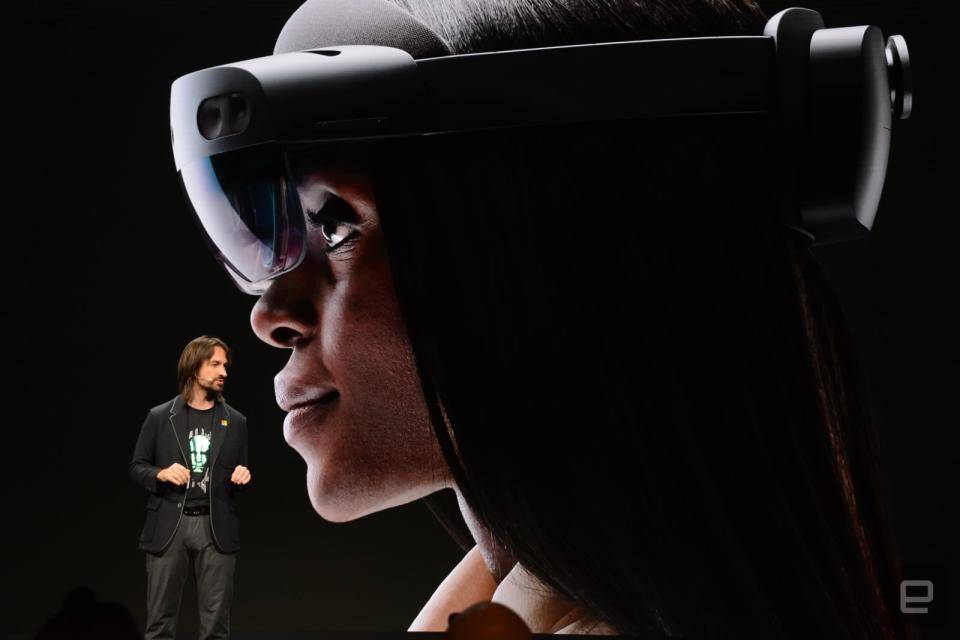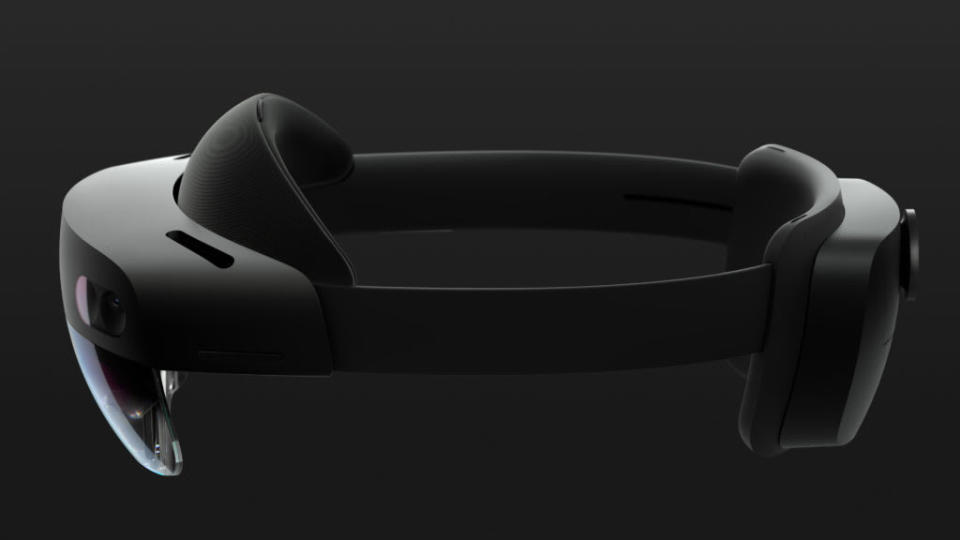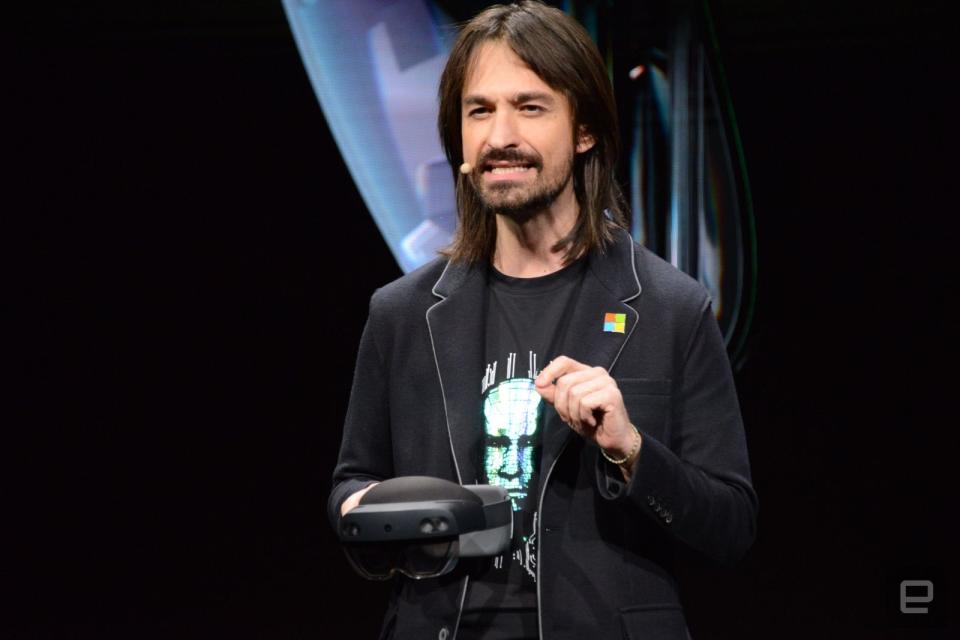Microsoft's mixed reality HoloLens 2 headset is official
It will launch later this year for $3,500.
We knew it was coming, but now it's official. Microsoft has unveiled HoloLens 2, a next-generation "mixed reality" headset that the company hopes will change "the way work gets done." Microsoft says it will be more immersive and comfortable than the original, and provide "industry-leading value out of the box." HoloLens 2 has more than double the field of view of its predecessor (Microsoft didn't give an exact figure) while maintaining the same 47 pixels per degree of sight. The company says the change is equivalent to jumping from a 720p television to a 2K set for each eye. The headset will track your retinas to know exactly where you're looking, too, and support Windows Hello authentication out of the box.
HoloLens 2 uses a new "time-of-flight" depth sensor, combined with some fancy algorithms, to track your hands controller-free. During a live demonstration, a Microsoft employee yanked various applications in 3D space, including a virtual piano and Microsoft Teams -- the company's take on Slack and Facebook Workplace. You can use a single finger or an entire fist to punch buttons and other interface elements in mid-air -- it doesn't really matter because none of these elements have any actual weight.
The new headset should be more comfortable thanks to carbon-fiber material and improved thermal management. There's a dial for tightening the main headband, similar to PlayStation VR, and the main visor can flip up if you quickly want to concentrate on something else.
Microsoft is still targeting enterprise customers with the HoloLens 2. At Mobile World Congress, the company spent a lot of time explaining how the device will provide "immediate" value to large businesses. It's already working with a number of industry partners, including Airbus, Honeywell, Pearson and Saab on launch software for HoloLens 2 users. Microsoft also teased "true collaborative computing" with a workplace application called Spatial. Anand Agarawala, co-founder and CEO of Spatial, showed off a virtual whiteboard where multiple people could chat and share ideas. It was similar to Oculus Rooms, but more sticky notes and fewer mini-games.

Microsoft will allow businesses to customize HoloLens 2 before purchasing a fleet of headsets. Trimble, the owner of 3D modeling package SketchUp, has already modified the headset so that it can be worn like a hard hat in construction sites and other potentially dangerous locations. The rebranded version will be called Trimble XR10 and is set to launch alongside the regular HoloLens 2 later this year. Microsoft says it will work with other companies and launch more bespoke headsets over time.
HoloLens 2 will launch later this year for $3,500, or as part of a subscription that includes Dynamics 365 Remote Assist (a piece of software that helps technicians diagnose problems remotely) for $125 per month. The headset will be sold in the US, Japan, China, Germany, Canada, the UK, Ireland, France, Australia and New Zealand, Microsoft confirmed.
The original HoloLens was released in March 2016. The hardware was undeniably unique, and early demos, which included a tabletop version of Minecraft, hinted at the platform's potential. The Development Edition was never meant for the public, however, and the $3,000 price tag was too high for most people. The headset suffered from a narrow field of view, too, that limited the effect to a letterbox-sized window. With no major price drops or bundles, the platform was limited to the enterprise and education markets.

A lot has changed since then, however. Microsoft has launched Mixed Reality, a broader VR and AR platform supported by a range of third-party headsets. Secretive startup Magic Leap has also released the One -- an early Creator Edition, anyway -- for $2,295. Like the original HoloLens, this headset is clearly meant for developers to experiment with and start building applications. The platform has some traction -- you can already pet Star Wars porgs and fling Angry Birds around -- but it still doesn't feel like a consumer product. For now, the most popular and accessible AR experiences remain, unsurprisingly, on people's smartphones.
Will HoloLens 2 change that? It seems unlikely. The company is laser-focused on enterprise customers and, by extension, happy for Magic Leap to claim the consumer market. As the year wears on, it'll be interesting to see which, if any, manages to strike a chord with its intended audience.



